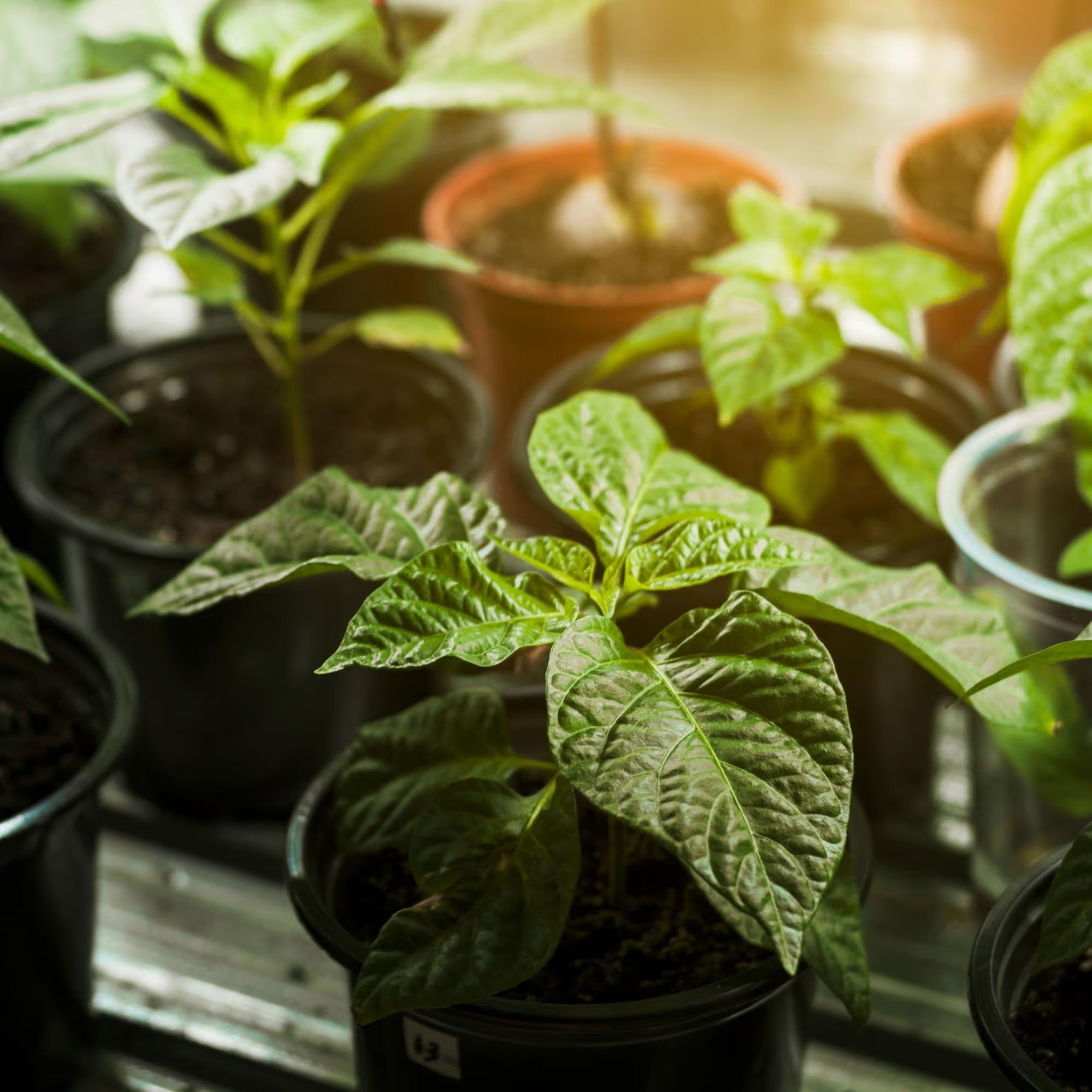
Basil is a plant that requires plenty of light for optimal growth and development. Proper lighting, whether natural or artificial, significantly affects the plant's health, leaf volume, and the intensity of its fragrance, which is one of the key characteristics of this species. To ensure healthy basil growth, it is essential to choose the right light source that will enable the plant to develop properly. Whether grown indoors or outdoors, the choice of light directly impacts the vitality and characteristics of the plant.
Basil is a plant that naturally grows in areas with abundant sunlight, so providing it with as much natural light as possible is essential for optimal growth. The ideal location for basil is near a south- or southeast-facing window, where the plant can receive at least 6-8 hours of direct sunlight daily.
Optimal Temperature and Light: Basil thrives in warm weather, with the ideal temperature for growth ranging between 18°C and 29°C. Temperatures exceeding this range may stress the plant, while excessively cold light can hinder its growth.
Avoiding Shadows and Dark Corners: Basil does not like to be in the shade, as a lack of light can slow its growth, weaken the plant, and reduce its aromatic properties. When grown indoors, it is recommended to place basil in a bright spot, away from deep shadows or heavy curtains.
For year-round basil production and ensuring access to fresh and healthy herbs, artificial light provides an effective solution for creating optimal growing conditions. There are various types of light sources, with two of the most popular for plant growth being LED lights and fluorescent lights.
LED lights are among the most efficient light sources for indoor growing, thanks to their energy efficiency and long lifespan. This type of light offers a wide color spectrum, allowing for the selection of the light that best suits the plant's needs. Cold LED lights are recommended as they promote photosynthesis and enhance plant growth.
Fluorescent lights are also a good option for growing basil, particularly in smaller spaces. Their advantage lies in emitting cool light, which is suitable for plants that require light but not excessive intensity. Although fluorescent lights are generally more affordable compared to LEDs, their energy efficiency is not on the same level.
Proper positioning of artificial light is crucial for optimal plant growth. When using LED or fluorescent bulbs, the light should be placed 20-30 cm above the plant’s canopy. It is also important to ensure even light distribution so that the plant can grow evenly in all directions, rather than in one direction toward the light.
Light duration is also key to basil’s proper development. It is recommended that the plant be exposed to light for 12-16 hours a day if grown indoors. During the day, adequate light must be provided, and at night, the plant should have a period of rest in the dark. Excessive light exposure can cause stress to the plant, while a lack of light can slow its growth.
Light temperature has a significant effect on basil’s development. The plant thrives when exposed to light with a temperature range of 5000K to 6500K. This type of light, known as "cool white," mimics natural daylight and stimulates photosynthesis. On the other hand, warm light (2700K to 3000K) can be beneficial during the flowering and fruiting stages of plants, but for basil, cool light is preferable during the growth and leaf development phases.
Artificial light is an excellent solution for achieving optimal conditions for basil cultivation, especially in spaces with limited natural light or during cloudy days and winter months. This type of light allows for precise control of lighting conditions, which is crucial for successful growth, plant health, and leaf color. Moreover, artificial light can be adjusted to meet the specific needs of basil, ensuring high quality, rich fragrance, and intense growth throughout the entire growing period.
For successful basil cultivation, whether grown indoors or outdoors, proper lighting is a key factor in its healthy development. By selecting the right natural or artificial light and positioning light sources at the correct distance, optimal conditions for the plant’s growth and development can be achieved. By combining the right light duration and light temperature, it is possible to achieve leaf fullness, plant health, and intense fragrance which are the key characteristics of high-quality basil. Artificial light, especially in limited spaces or during winter months, provides an efficient solution that allows for controlled lighting conditions, ensuring basil is available year-round.